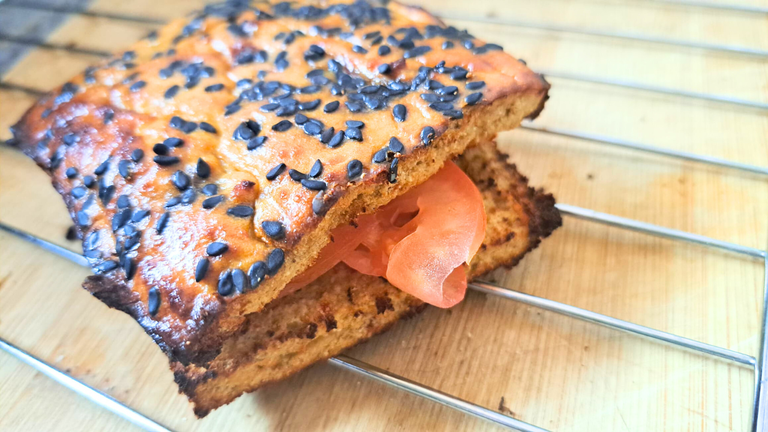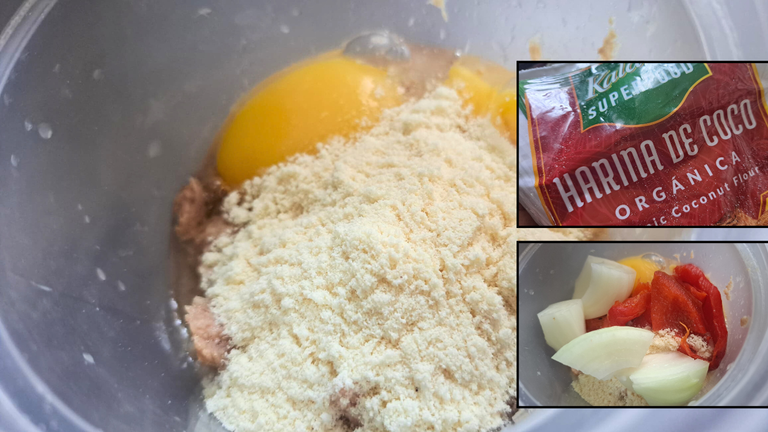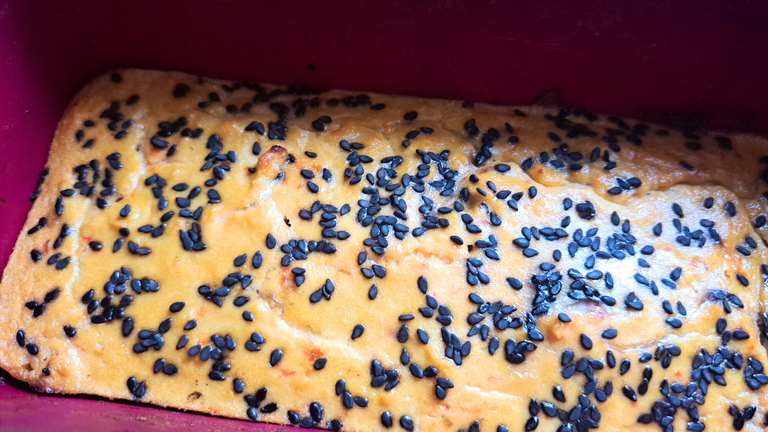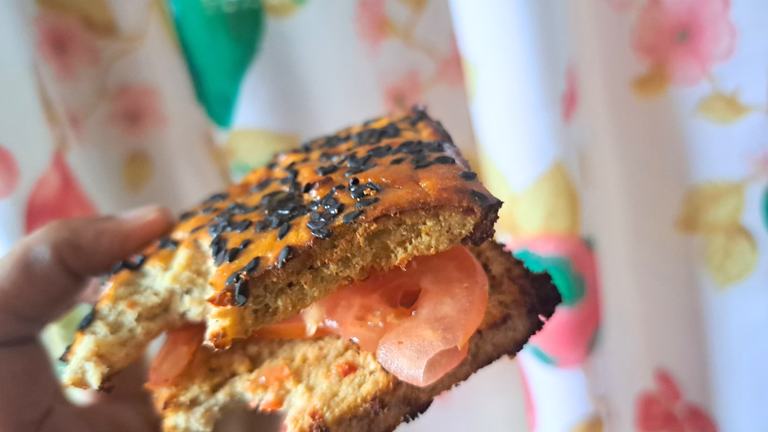
Empezaré diciendo que le he llamado pan, porque así le llaman en las redes sociales, pero para mí vendría a ser una tortilla no convencional, pues el acabado final no posee una de pan, que es lo considero que caracteriza al pan, pero como puedes rellenarlo entonces es aceptable que se use este nombre.
De igual forma, este pan se convierte en una buena y muy rica opción, porque vaya que queda delicioso, para cuando quieres pasar del pan blanco y darte un gusto sin culpa y es tan fácil de hacer que, una vez que lo pruebes, seguro que desearás repetir su preparación
¡Ven y te muestro cómo prepararlo!
I will start by saying that I have called it bread, because that's what they call it in social networks, but for me it would be a non-conventional tortilla, because the final finish does not have a bread finish, which is what I consider that characterizes the bread, but since you can fill it then it is acceptable to use this name.
In the same way, this bread becomes a good and very tasty option, because it is delicious, for when you want to go beyond white bread and treat yourself without guilt, and it is so easy to make that, once you try it, you will surely want to repeat its preparation.
Come and I'll show you how to prepare it!
Ingredientes (Ingredients)
- Una lata de atún de 140 gramos (98 gramos escurrido)
- 2 huevos.
- 3 cucharadas de agua.
- 2 cucharadas de harina de coco.
- 40 gramos de pimentón rojo.
- 40 gramos de cebolla blanca.
- Sal al gusto.
- One 140-gram can of tuna (98 grams drained).
- 2 eggs.
- 3 tablespoons of water.
- 2 tablespoons of coconut flour.
- 40 grams of red bell pepper.
- 40 grams of white onion.
- Salt to taste.
Preparación (How to make it)
- Para hacer este pan, el primer paso a realizar es colocar el atún dentro de un envase. Puedes hacerlo en la licuadora, pero como en este momento la mía está dañada, así que usé mi batidora de mano.
To make this bread, the first step is to place the tuna inside a container. You can do it in a blender, but since mine is currently broken, I used my hand blender.

- Luego se agrega la harina de coco, los huevos y los aliños. En mi caso usé pimentón rojo porque me gusta muchísimo el sabor que aporta. Por el toque dulce equilibra muy bien los sabores y cebolla, cuyo sabor combina a la perfección con el atún. Si vez que la consistencia está muy espesa, puede añadir un poquito de agua hasta lograr una consistencia más fluída.
Then add the coconut flour, eggs and seasonings. In my case I used red pepper because I really like the flavor it adds. Because of the sweet touch it balances the flavors very well and onion, whose flavor combines perfectly with the tuna. If you find that the consistency is too thick, you can add a little water to achieve a more fluid consistency.

- Solo queda procesar muy bien todos los ingredientes, recuerda añadir sal al gusto si así lo deseas. También es importante tomar en cuenta que el atún de lata, generalmente, viene con bastante sal. Una vez procesado, lo viertes en un molde de silicona, yo te recomiendo usar uno de estos, pues la harina de coco suele pegarse de los moldes de aluminio, según mi experiencia. Si usas un molde de aluminio, podría ser una buena opción cubrir con papel encerado y aceite.
All that remains is to process all the ingredients very well, remember to add salt to taste if desired. It is also important to take into account that canned tuna usually comes with a lot of salt. Once processed, pour it into a silicone mold, I recommend using one of these, as coconut flour tends to stick to aluminum molds, according to my experience. If you use an aluminum mold, it might be a good option to cover it with wax paper and oil.

Le añadí sésamo negro pues me encanta la belleza que le aporta a los panes, lleva a horno precalentado a 175 grados centígrados por 35 minutos, recuerda que el tiempo de cocción siempre va a depender de tu horno. Para estar segura de si esta cocido o no, puedes usar un palillo o cuchillo e insertarlo en el pan, si sale limpio es que el horneado se ha completado.
I added black sesame seeds because I love the beauty it brings to the breads. Bake in a preheated oven at 175 degrees Celsius for 35 minutes, remember that the baking time will always depend on your oven. To be sure if it is cooked or not, you can use a toothpick or knife and insert it into the bread, if it comes out clean it means that the baking is complete.

- Deja reposar para picarlo, puedes comerlo así, o hacer como hice yo, que lo llevé al horno para que se tostara. Usé la opción de tostar de mi horno/freidora de aire. Pero en horno a 180 grados centígrados por unos diez minutos debe bastar para que se dore un poco más tu pan.
Let it rest to chop it, you can eat it like that, or do as I did, which I took it to the oven to toast. I used the toast option of my oven/air fryer. But in the oven at 180 degrees Celsius for about ten minutes, it should be enough to brown your bread a little more.

Como ya mi proteína está en las rebanadas opté por rellenarlo con tomate, este pan queda ríquisimo, es bastante jugoso y con un profundo sabor a atún, puedes añadirle lo que desees ¡Te va a encantar!
As my protein is already in the slices I chose to fill it with tomato, this bread is delicious, it is quite juicy and with a deep tuna flavor, you can add whatever you want, you'll love it!


